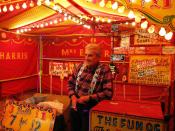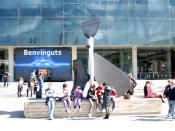AbstractRiver City was a small town located in a north central state and by 1984 it had a population of approximately 210,000. The biggest employer in the community was an automotive parts plant owned by one of the big three American auto makers.
The automotive parts plant was first unionized in the mid 1930s by the International Metalworkers Union (IMU). Through out the years, IMU became more established and had finally successfully unionized the whole plant in 1956. In addition to the automotive parts plant, the IMU was also able to unionize several machine shops and other local manufacturing plants.
By 1970, other union such as the National Education Association (NEA) had also successfully organized River City school teachers and college professors. Soon, collective bargaining became a fact of life in River City with the unions actively participating in the local politics. Eventually River City became known as a Union Town.
First Central Bank from Management's PerspectiveFounded it in 1892, First Central Bank (FCB) was the oldest and most established commercial bank in the River City community with $800 million in assets. Until 1986, collective bargaining was never a reality or a threat to FCB, in its 94 years of operation.
The primary factors which protected FCB from the organized labor movement for so long can be attributed to prestige, good working hours, formal job evaluation program, career advancement, job security, incentive plans and other company benefits.
FCB was widely viewed by the River City community as a prestigious place to work. The offices were clean and pleasant and the atmosphere was congenial and unhurried. While employees averaged only 35 hours per week, the established work week was 38 hours.
FCB was also a great place for career focused and hard working individuals. It believed in promoting from within...


